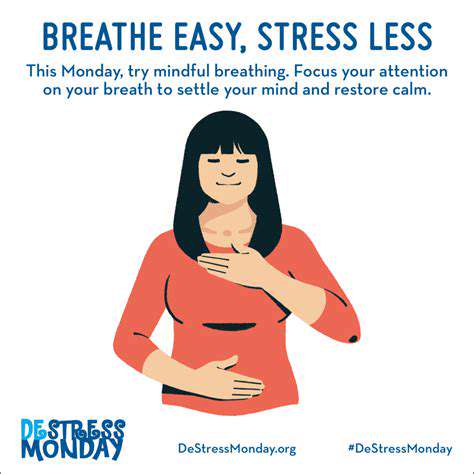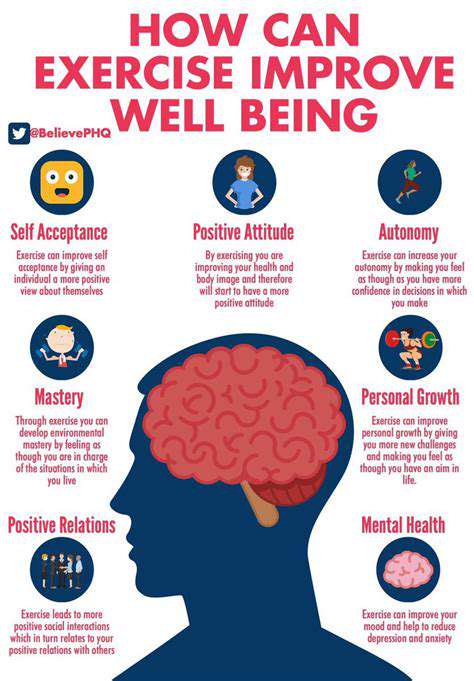Simple Easing Techniques for Managing Anxiety
Outline
The breathing pattern directly affects emotional states; regulating breathing can effectively alleviate stress responses.
Abdominal breathing and square breathing techniques can enhance relaxation and improve focus.
Consistent breathing training can establish a long-term stable psychological adjustment mechanism.
Mindful meditation breaks the cycle of anxiety by focusing on the present moment.
Basic breathing awareness techniques can strengthen emotional management skills.
Continuous meditation practice can reshape the neural pathways in the brain that respond to stress.
Regular exercise improves emotional states through biochemical mechanisms.
Physical activity shifts attention and enhances the sense of self-efficacy.
Selecting the right form of exercise is key to maintaining a workout routine.
Structured exercise programs build emotional buffering barriers.
Group exercises create supportive social networks.
Environmental design has a regulating effect on psychological states.
Writing helps organize chaotic thoughts.
Gratitude journals cultivate positive cognitive patterns.
Multimedia journals enhance dimensions of self-observation.
1. Breathing Training: Activating the Switch for Calmness

1.1 Breathing Mechanism and Emotional Connection
When we are anxious, our breathing pattern unconsciously becomes shallow, which sends danger signals to the brain. Interestingly, consciously extending the exhalation can activate the vagus nerve, acting like a pause button for the body, gradually calming the overly active sympathetic nervous system. Clinical data shows that practicing deep breathing for 10 minutes daily led to an average decrease of 37% in anxiety scale ratings after two weeks.
For example, many people instinctively hold their breath before an important meeting. Switching to abdominal breathing, imagining the abdomen inflating like a balloon during inhalation and slowly deflating during exhalation, can quickly interrupt the cycle of anxiety.
1.2 Practical Breathing Regulation Toolbox
- Wave breathing: inhale for 4 seconds, hold for 2 seconds, exhale for 6 seconds, simulating the rhythm of the tides.
- Alternate nostril breathing: use the thumb to hold one nostril and inhale through the other, switch sides for exhalation, balancing the nervous system.
- Bumblebee breathing: exhale while making a buzzing sound; the vibrating frequency can relieve cranial cavity pressure.
Last week, a programmer shared that he successfully managed his anxiety during code debugging using the 4-7-8 breathing method: inhaling for a count of 4, holding for 7 seconds, then slowly exhaling for 8 seconds with slightly pursed lips. This method of extending exhalation is particularly suitable for situations that require quick calming.
1.3 Establishing a Ritual for Breathing Training
It is advisable to anchor breathing exercises to daily behaviors: for example, committing to three deep breaths before answering the phone, or setting a breathing reminder on your phone at the hour. Research on neural plasticity suggests that practicing consistently for 21 days can change the brain's default response to stress. Placing breathing guidelines on your desk or using apps like Breathwrk for visual training can be beneficial.
2. Mindful Meditation: The Present is the Antidote
2.1 Dynamic Awareness Training Method
There’s no need to stick to traditional sitting meditation; feeling the temperature of water while washing dishes or paying attention to the sensation of your feet touching the ground while walking are effective mindful practices. A study from Harvard Medical School found that three short meditations (2 minutes each) daily are more sustainable than one longer meditation session. The key is to treat attention like a muscle—gently bringing it back to the present when the mind wanders.
2.2 Five Senses Focusing Technique
When anxiety strikes suddenly, try the 5-4-3-2-1 grounding technique: name 5 visible things, 4 things you can touch, 3 sounds you can hear, 2 things you can smell, and 1 taste you can sense. This method utilizes sensory stimuli to reclaim cognitive bandwidth, like hitting the brakes on a fast-moving brain. One patient with panic disorder reported that this method helped her safely reach her stop during a subway panic attack.

3. Exercise Prescription: Letting Dopamine Defeat Anxiety

3.1 Matching Exercise Types with Emotions
Different types of exercise produce various neurochemicals:
| Exercise Type | Primary Neurotransmitter | Applicable Scenario |
|---|---|---|
| Jogging/Swimming | Endorphin | Chronic anxiety |
| Boxing/Dancing | Norepinephrine | Acute stress relief |
| Yoga/Tai Chi | GABA | Sleep disorders |
It is crucial to find an exercise you look forward to. One client successfully quit anti-anxiety medication through Zumba classes, stating: when dancing along to the music, it was impossible to dwell on worries.
4. Environmental Recreation: Creating a Psychological Safe Zone

4.1 Optimizing Sensory Dimensions
Referencing hotel room design principles:
- Visual: Use the 60-30-10 color scheme (60% main color + 30% secondary color + 10% accent color).
- Auditory: Play pink noise in the background (more soothing than white noise).
- Tactile: Provide different textured stress-relief toys (such as silicone squeeze toys, plush pillows, etc.).
One anxiety patient transformed her desk into a mini healing station: plants filtered the air, a salt lamp adjusted the color temperature, and Bluetooth headphones played natural sounds, significantly reducing her tension while working.
5. Pen Healing: Writing is Seeing
5.1 Emotional Thermometer Recording Method
Daily use different colors to mark emotional states:
Blue - Calm | Green - Joyful | Yellow - Nervous | Red - Angry
After continuous recording, it was discovered that there was always a yellow mark at 3 PM every Wednesday, found to coincide with the department's weekly meeting. With this realization, the individual started practicing breathing exercises in advance, effectively reducing meeting anxiety.
5.2 Future Letter Technique
Write a letter to your future self three months from now: how will the current troubles appear to you then? This perspective shift can break the cycle of rumination. One patient with obsessive thoughts used this method to reduce anxiety intensity from 8 out of 10 to 3.